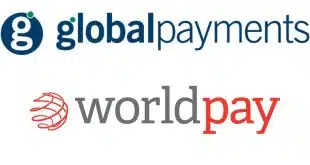In a development that could long complicate the introduction of commercial services allowing consumers to make point-of-sale payments with their mobile phones, mobile network operators say they will derive POS payment revenue chiefly from consumer transaction fees. According to research released this week, some 83% of carriers responding to an October survey fielded by Aite Group LLC indicated per-transaction fees charged to users are by far the most likely way they will get revenues from mobile-payment services. This result far outstrips subscriber fees for mobile data access, cited as the second-most-likely revenue source (36%). Yet banks and card networks have been adamant about not sharing transaction fees with mobile operators. And when it comes to near-field communication (NFC), the most likely technology for point-of-sale payment via cell phones, carriers' networks aren't involved in the transaction, since NFC involves a short-range radio-wave transmission of card data between device and POS reader similar to that which occurs with contactless cards. That makes carriers' high expectation of revenue from transaction fees surprising, says Nick Holland, a senior analyst at Aite and author of a report based on the survey. “That was probably the most jarring result [in the survey],” he tells Digital Transactions News. “It might be wishful thinking on their behalf.” That optimism shows up in other ways, Holland says. In related research Aite will bring out in coming weeks, carriers say they expect 12% of their subscribers will be regular users of NFC payment by 2010, he says. Currently, there is no commercial NFC service. Banks, the card networks, and mobile operators have tested the technology in various pilots both in the U.S. and overseas over the past two years. But mobile operators' heavy reliance on per-transaction fees may also indicate that operators and banks will be butting heads over the issue of transaction revenue for some time to come, making it unlikely carriers will soon find a way to justify the added expense of equipping mobile devices for NFC. “It's still very much a technology lacking a business case [for carriers],” says Holland. Nonetheless, Holland's report cautions against placing too much weight on the survey results. Although Aite sent the survey to some 200 mobile operators and virtual mobile network operators (MVNOs) around the world, just a dozen responded. “I got a large number of declines, much more so than for any other survey I've fielded,” Holland says. This indicates, he says, that the carriers “are keeping their cards very close to their chest” with respect to how they expect to make money from mobile payments and banking. The low response also means the data are not statistically reliable, the report says, though it adds the results are “strongly directional.” The report, which also covers mobile banking and payments via handset to merchant Web sites, shows respondents citing mobile advertising and handset upgrades in a tie, at 33%, as the most likely sources of revenue for point-of-sale payments, after transaction fees and subscriber fees for data access. It may not be surprising that fees for device upgrades for NFC rank far behind transaction fees, as they would be likely to discourage consumer adoption. Similarly, says Holland, the mobile carriers have shown low interest in fees for over-the-air provisioning of card data to phones and data plans for text alerts as revenue sources for NFC. “When you talk to them about NFC, it's all about enabling payments,” he says. Indeed, in the upcoming research, carriers say that if they were to enable NFC today, they would expect 2% of transactions to be charged to phone bills, according to Holland By the end of 2009, they expect that figure to swell to 15%. The carriers, says Holland, “are anticipating a shift in revenue to their payment channels.”
Check Also
Better Defenses Make It Harder to Perpetrate Fraud, a Report Finds
Ransomware demands and payments declined in 2024, thanks to a combination of better law enforcement …





